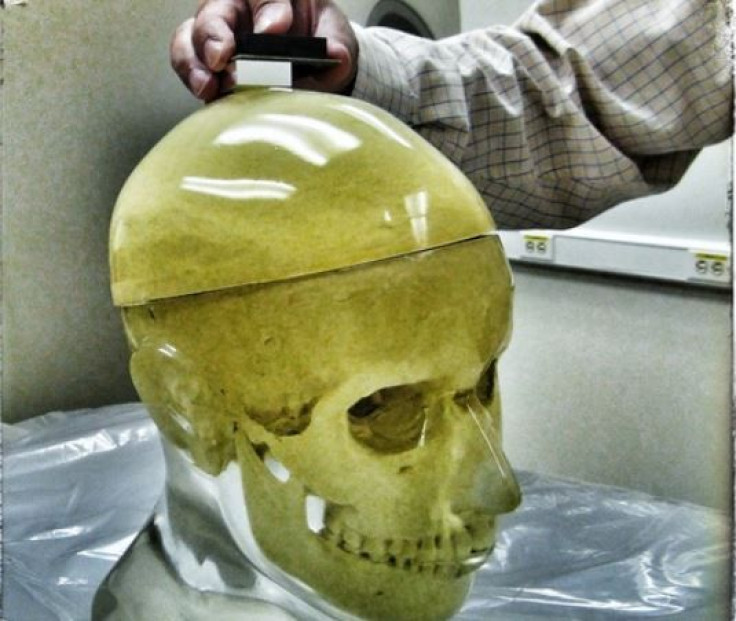PET Scans To Become More High Tech: GE Develops New Brain Imaging 'Helmet'

GE scientists are working on a positron emission tomography (or PET scan) “helmet” that would not only allow scientists to observe the human brain on its deepest cellular level, but would permit this unique view of mental activity while a person moved around as usual. Like Toto pulling aside a curtain to expose the wizard, this new wearable technology would reveal the brain's real-time motor activity.
“We still know very little about the brain, and PET images are still very fuzzy and blobby,” said Dr. Ravindra Manjeshwar, who runs the functional imaging laboratory at GE Global Research, in a press statement. “But this technology could improve our molecular sensitivity by a couple of orders of magnitude.”
Current PET scan technologies are most often used to monitor the spread of cancer and an individual’s response to treatment. Unlike X-ray and MRI machines, which take pictures of bones and organs, PET scans are used to study the body’s functions. The current process begins with a doctor injecting a patient with special tracers that contain radioactive isotopes. The tracers attach themselves to target tissues, and then the doctor follows their distribution and listens for signals.
For the new "helmet" scanner, GE scientists have developed a new class of tracers that can detect neuroinflamation (present during concussions), as well as the amyloid plaque and tau proteins associated with Alzheimer’s disease. After being injected with the new tracers, the lightweight, high-resolution, high-sensitivity scanner would sit comfortably on the head of a subject. From this position, it would search for misfolded proteins and other signs of neurological disorders within individual cells.
Importantly, GE scientists say the helmet’s extreme sensitivity reduces the amount of tracers needed for imaging, such that only “micro-doses” would be required. Overall, then, a patient’s total radiation exposure would be reduced to about as much radiation delivered when flying across the country in an airplane. Manjeshwar believes the new technology will be “a quantum leap” forward in terms of what scientists will be able to detect with regard to brain function.
GE’s new project is part of the Brain Research through Advancing Innovative Neurotechnologies (or BRAIN) Initiative, launched in April 2013 by the president. The goals of the initiative include developing new ways to study brain function as well as treating and preventing disease and disorders such as Alzheimer’s, autism, and concussions. GE, which is collaborating with West Virginia University, the University of Washington, and UC Davis to develop the new PET scan helmet, is receiving some of the $240 million in research funds granted to corporations, universities, and foundations by the initiative.



























